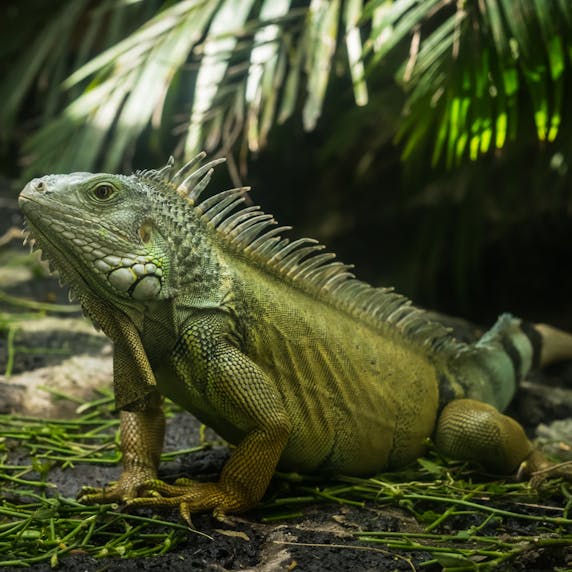
On a high branch in the Windward Islands of the Antilles, a reptile basks in the evening sun. This Lesser Antillean iguana is a rare sight: it is only found on a few islands in the world. But these herbivores are becoming increasingly difficult to find. The lizard species is under severe pressure, partly due to hunting and the arrival of the closely related green iguana. That is why Rotterdam Zoo is committed to protecting this critically endangered species.
Iguana delicatissima

25 years
± 25 centimetres
± 108 centimetres
0.8 – 3.6 kilograms
The Lesser Antillean iguana is a medium-sized lizard species. It can be recognised by its green to grey scales, light-coloured head and row of spines running down the middle of its back. Most of its body length consists of its tail, which can grow to around 80 centimetres.
The Lesser Antillean iguana resembles the closely related green iguana, but does not have black stripes on its tail or round cheek scales with a dark circle around them. Can you spot the differences?
The Lesser Antillean iguana was once found on many of the Caribbean Windward Islands, also known as Lesser Antilles, from Anguilla to Martinique. Today, the species is extinct on some of these islands. One of the islands where it still occurs is Sint Eustatius, which is also where the iguanas in Rotterdam Zoo come from. The iguana lives mainly in wooded and shrubby environments.
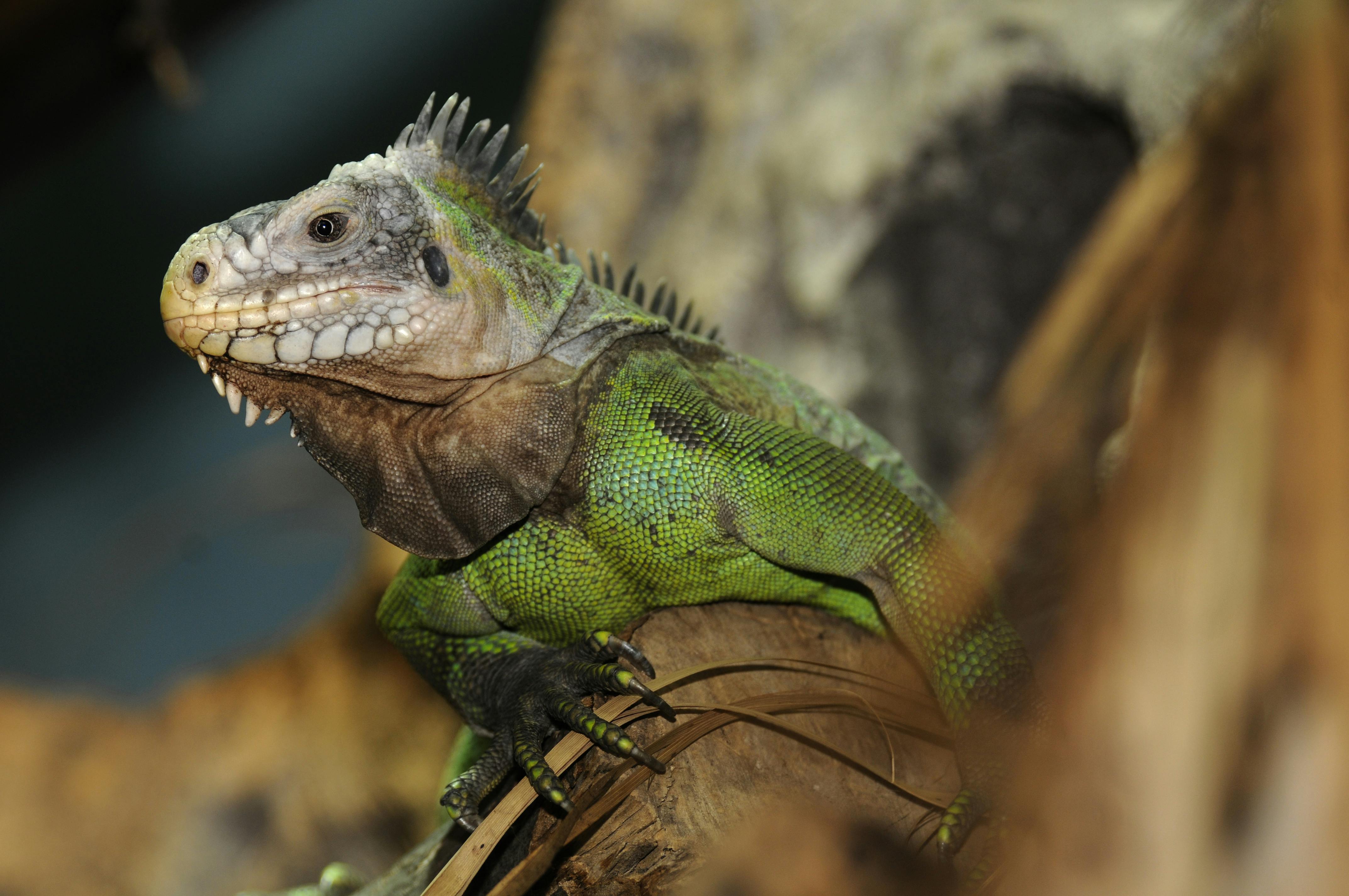
Lesser Antillean iguanas are herbivores. They mainly eat leaves, flowers and fruits from many different shrubs and trees. It just depends on what is growing at the time: in dry periods, leaves are mainly on the menu, while in the rainy season there is plenty of fruit available.
By eating fruit, Lesser Antillean iguanas may also play a major role in spreading seeds. They do this by not digesting the seeds completely and defecating them in a different place than where they ate the fruit. In this way, iguanas help to preserve their own habitat.
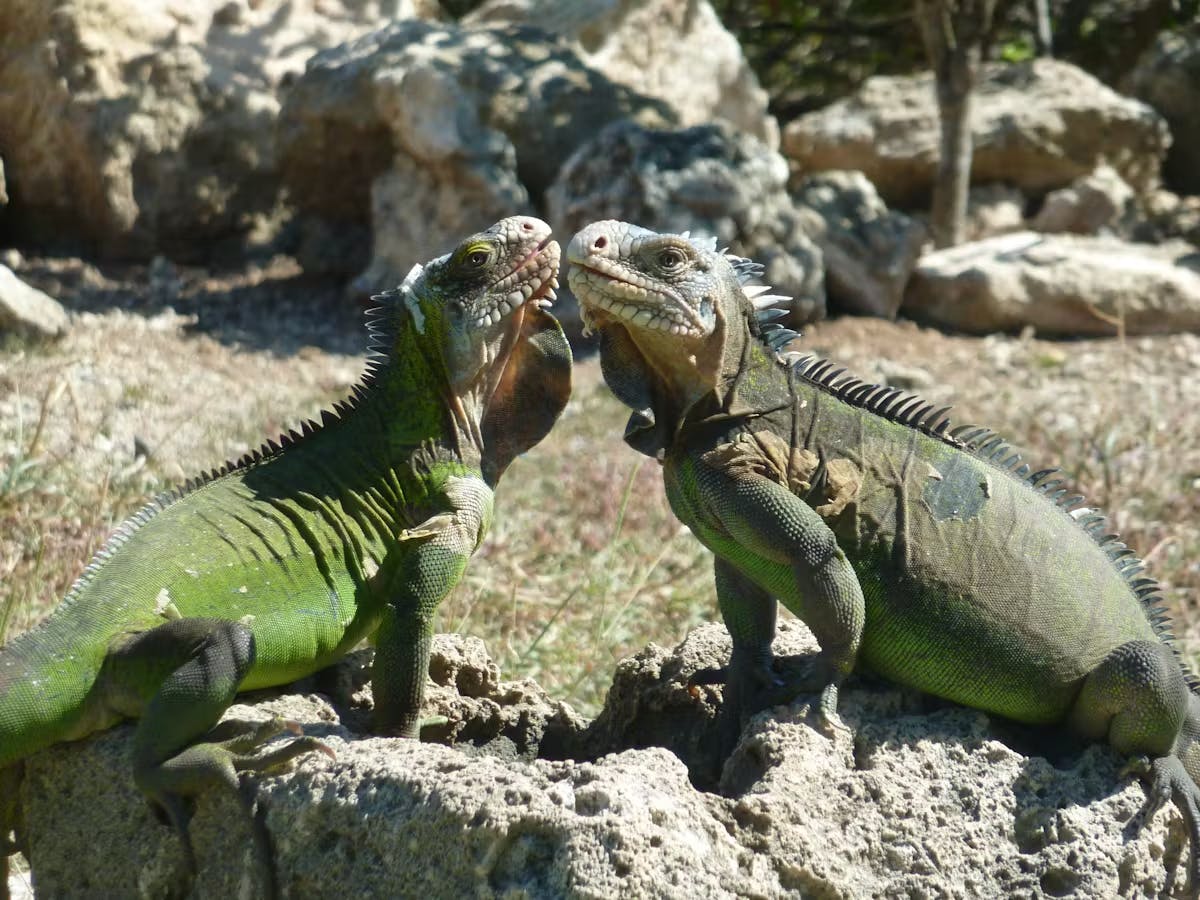
Lesser Antillean iguanas are solitary animals. This means that they generally live alone. Only during mating season do iguanas seek each other out.
Male iguanas in particular can be very territorial: males leave their scent behind via glands near their hind legs. If another male comes too close, they threaten by nodding their heads before attacking.

During the mating season, which lasts from March to September, the male's white face turns pink to impress the female. There are few visible rituals for mating except for a head-nodding movement by the male. Mating itself begins when the male bites the female's neck. Any wounds on the female's neck heal quickly, but sometimes leave scars. Lesser Antillean iguanas sometimes mate twice in one season and also lay eggs twice.

Lesser Antillean iguana mothers bury their eggs to keep them safe from predators. They then protect their nest for a short time, but do not provide any real parental care.
Young Lesser Antillean iguanas are about seven centimetres long and bright green when they hatch. As they grow, their scales become increasingly grey. They reach sexual maturity after about two to three years, but most males do not reproduce until later because older males are more dominant. Iguanas continue to grow throughout their lives.
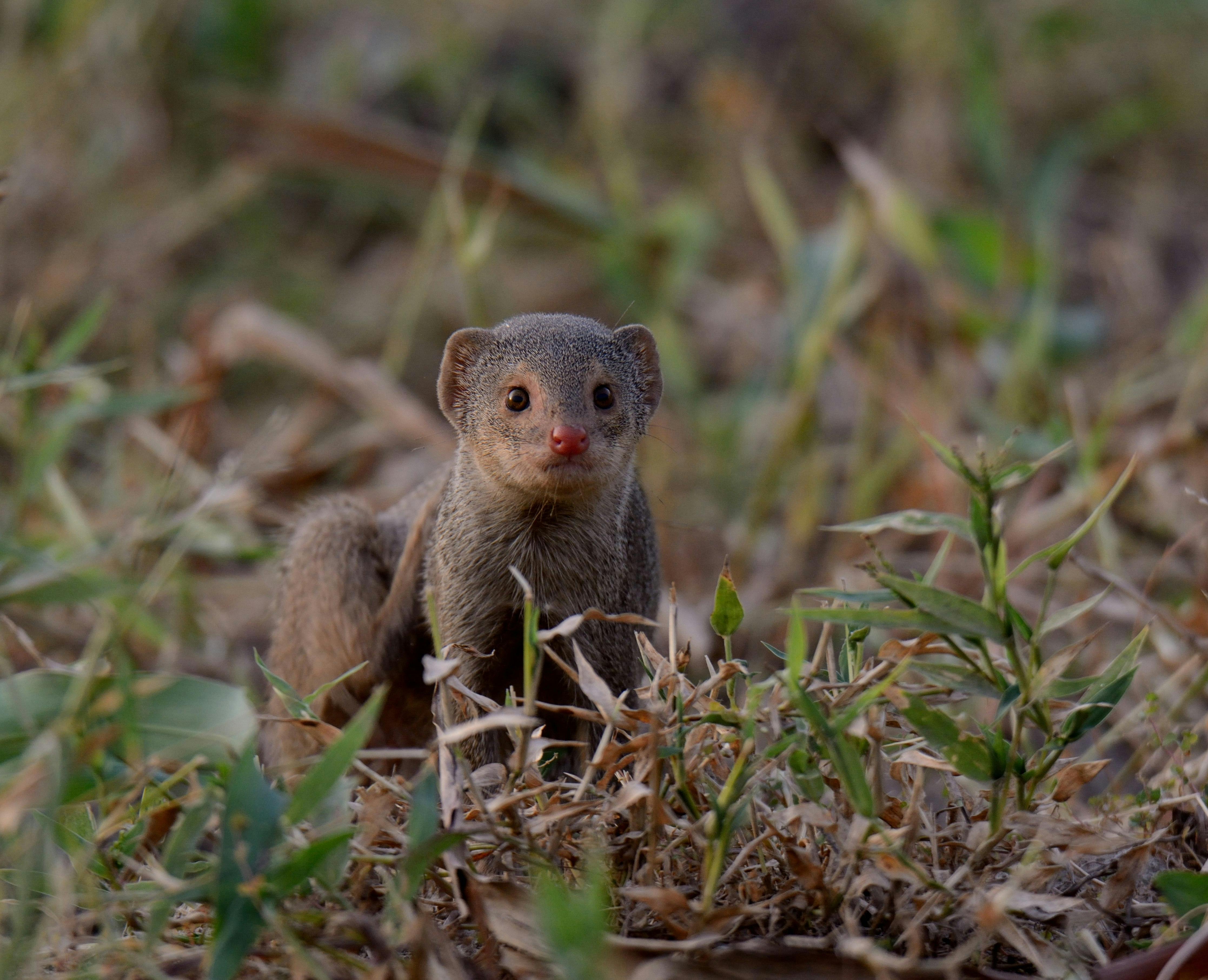
By nature, Lesser Antillean iguanas did not have much to fear from predators. They are sometimes preyed upon by large birds of prey and presumably by snakes, such as the Dominican boa. Young iguanas must also be wary of falcons and owls.
Nowadays, there are many more predators in the lizard's natural habitat. Cats, dogs and mongooses were all brought over by European colonists. These animals pose a great danger to the lizards, which have never had to adapt to this type of predator.

The Lesser Antillean iguana is also known as the “tasty iguana”. Its meat was considered a delicacy, hence its scientific name “delicatissima”. This is why the iguana was hunted extensively in the past. It is one of the many reasons why the animal is now critically endangered. Although hunting is now prohibited in much of its habitat, the poor local population still hunts the iguana out of tradition. Many iguanas are also killed by pets, such as cats and dogs.

Another threat is the green iguana. This species is appearing more and more often on the islands where the Lesser Antillean iguana lives. These iguanas travel as stowaways on ships or swim from island to island themselves. Green iguanas are so closely related to Lesser Antillean iguanas that they can reproduce with each other. This results in fertile crossbreeds with characteristics of both species. This is also known as hybridisation. These hybrid iguanas displace the native Lesser Antillean iguanas because they are larger and reproduce more quickly. Thus, the hybrid iguanas are slowly but surely replacing the Lesser Antillean iguanas, which will eventually lead to their extinction.
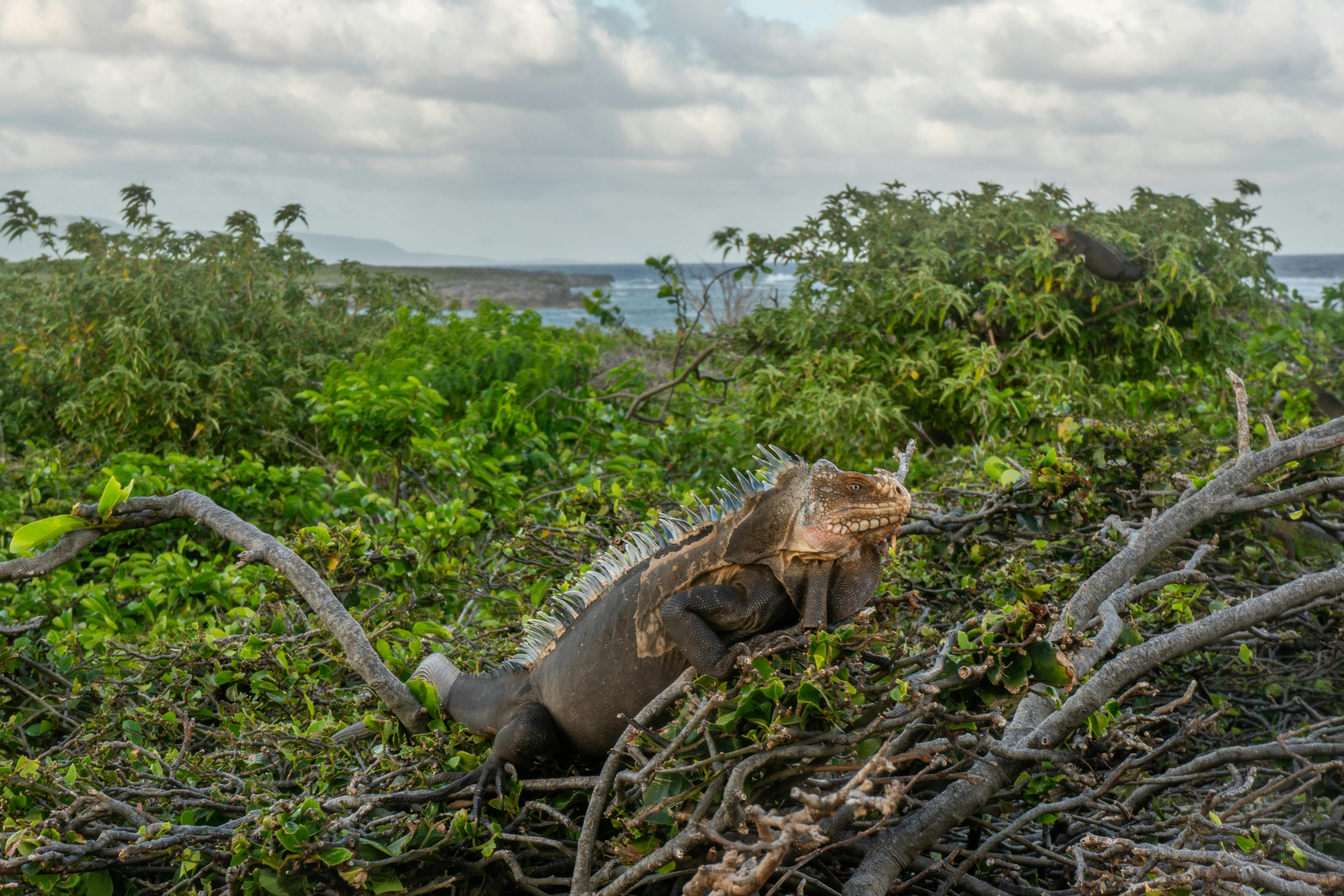
Rotterdam Zoo works together with RAVON, an organisation dedicated to native reptiles, amphibians and fish, and STENAPA (St. Eustatius National Parks) to protect the Lesser Antillean iguana in the wild. Since 2015, for example, research has been conducted in which the iguanas are given coloured beads around their necks. This allows researchers to count how many iguanas there are on Sint Eustatius. They also take blood samples, which they use to study the genetic diversity within the population. This enables them to assess the health of the population on Sint Eustatius.
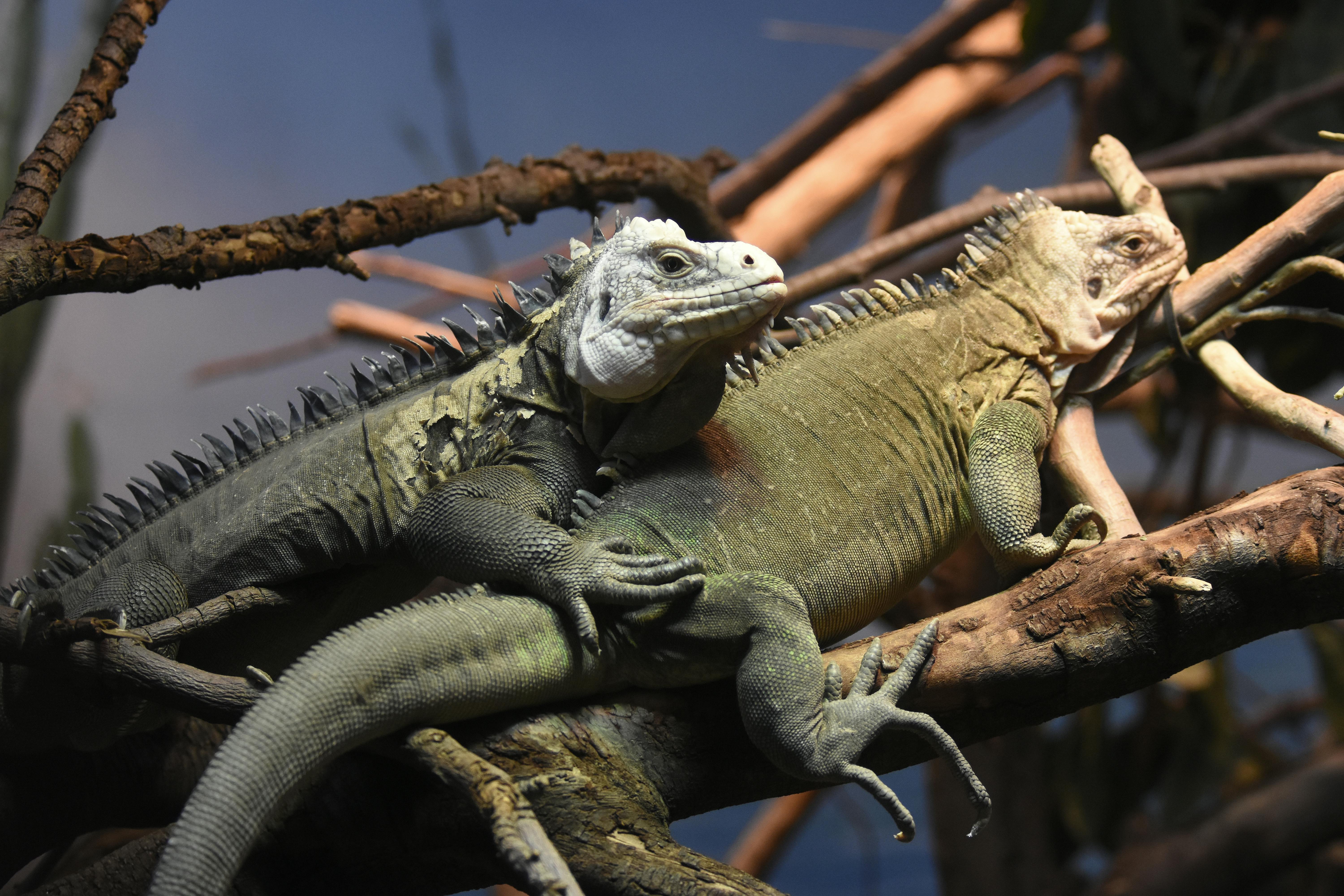
Rotterdam Zoo participates in the European population management programme for the Lesser Antillean iguana. In 2018, four Lesser Antillean iguanas were flown from Sint Eustatius to Rotterdam on a government plane for this purpose. The coordinator determines which animals are best paired with each other for healthy offspring based on the pedigree of iguanas in zoos. These young animals are then moved to other zoos to form the next generation. In this way, we are building up a healthy population as a reserve for the wild animals, with the ultimate goal of returning iguanas to their natural habitat when conditions are favourable.

